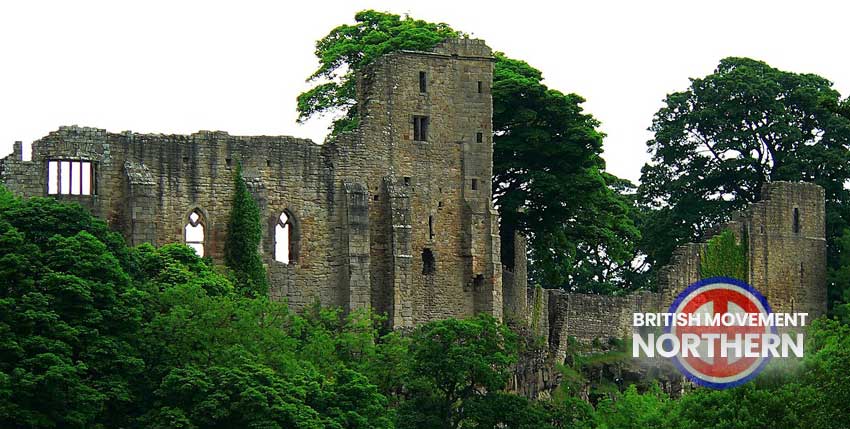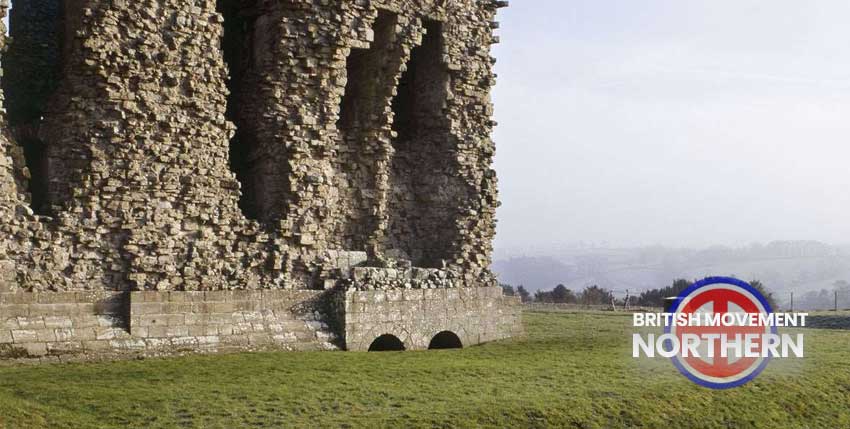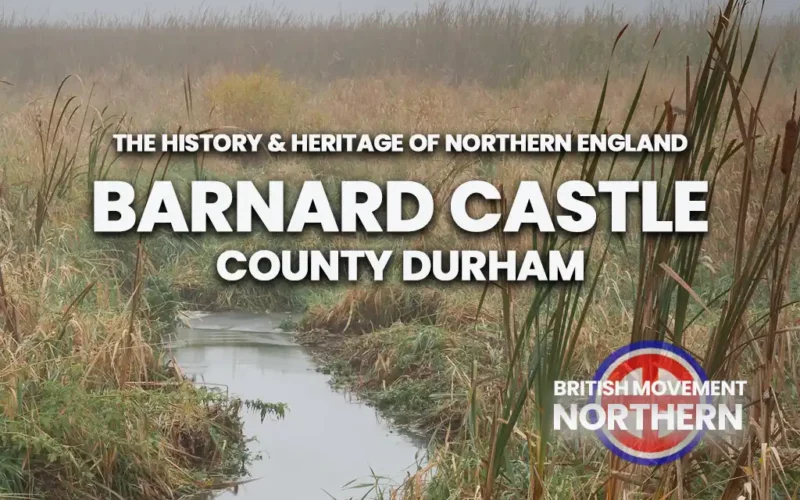Once again this series casts its gaze upon a small town that did not reach any historic significance until the Norman period in the decades after the Norman invasion of 1066. The North of England had taken longer to pacify and bring under control than the south-eastern and midland areas of England.
The town sits below the castle, which was built on the high ground above an ancient crossing point on the River Tees. Prior to the Roman invasion of Britain, the territory where Bernard Castle now stands was under the control of the Celtic tribe the Brigantes. During the Roman occupation of Britain, this river crossing had been an important strategic position on one of the routes north to Hadrian’s Wall.
The lands on which the castle and the town were built were originally claimed by the Bishops of Durham during the Anglo-Saxon period, when the early church was being established from the 8th Century onwards. Most historians consider that construction of the actual castle began in the year 1093, the motivation was to have a military base controlling the river crossing on the route between the Honour of Richmond, where a Norman castle was being constructed and the lands awarded to the Bishop of Durham.

The first overlord of the castle was the Norman knight Guy de Balliol, as a reward for his military service and loyalty to King William II. The Balliol family remained in control of Barnard Castle and the growing town until the 14th century, when King Edward I passed ownership and control to Guy de Beauchamps, Earl of Warwick. From that point onwards the Earls of Warwick held Barnard Castle for the next 164 years.
The prosperity and survival of the town has always been linked to the castle. Barnard Castle was constantly viewed as a castle and a town that should be under the control of the Prince Bishops of Durham, but the Balliol family resisted those machinations.
The siege of 1216 was the first real military test for the castle. That year King John died and the northern barons rose in rebellion, a situation exploited by King Alexander II of Scotland, who marched into the North of England and was supported in this territorial grab by many of the rebel barons. However the garrison at Barnard Castle were opposed to the rebellion and held fast against the combined force of Scots and rebel barons. Tragedy struck the besieging forces when the nobleman Eustace de Vescy, brother-in-law of the Scottish king, rode his horse too close to the castle and was fatally shot by one of the defending crossbow men.
The Scottish-sponsored rebellion collapsed over the following year as the new English king, Henry III marched north to restore order and the siege of Barnard Castle ended. The loyalty of the garrison was duly rewarded with royal favours.
The Wars of the Roses did of course impact the castle and the town; as is noted above, the Earls of Warwick held the castle and the town, and in 1446 Richard Neville, (Warwick the King-maker) inherited the castle and its estates. He was killed in 1471 fighting for the House of Lancaster at the Battle of Barnet. In the aftermath, his lands and estates were divided between his two daughters. Anne Neville inherited Barnard and was soon married to Richard Plantagenet, the Duke of Gloucester, who later became King Richard the Third.
The estates and castle were now firmly in the Yorkist camp until Richard’s death in August 1485. After Richard’s death at the Battle of Bosworth, his widow surrendered her claim to the castle and its estates to the new king, Henry VII, who in turn appointed a loyal Tudor noble family, the Bowes, as keepers and custodians of Barnard Castle and the town. A peaceful period followed the takeover by the Bowes family, but it was not to last long.
The nobleman Richard Bowes was keeper of the castle in 1536, when there was an uprising against King Henry VIII, the so-called ‘Pilgrimage of Grace’, which was supposed to challenge the anti-Roman Catholicism of the Suppression of the Monasteries. Richard Bowes demonstrated his unreliabilty as keeper by surrendering the castle and the town to the rebels and becoming a leading member of the rebellion, only to later revert back as a loyal servant of the Crown and restore royal control over the district.

Another destructive siege of the castle followed in 1569 during the ‘Rising of the North’, by now the keeper of Barnard Castle and the town was Sir George Bowes. Bowes held the castle in support of Queen Elizabeth I against the Roman Catholic rebels who were fighting in the name of Queen Mary Stuart. The town was damaged and occupied during the siege, the outnumbered garrison of Bowes eventually surrendered after the desertion of many of his men and the cutting off of the castle’s water supply. Bowes died years later in 1580 and was still regarded as a loyal servant of the Tudor monarchs.
The first stone built bridge over the River Tees at Barnard Castle was constructed in 1569, however the damage to the castle and town inflicted during the siege of 1569 was still noted 30 years later. In 1603, Barnard Castle was passed to Robert Carr, the Earl of Somerset, by King James the First.
The castle passed later to the control of another loyalist nobleman, Sir Henry Vane, who was noted for taking away much of the best building stone from the damaged castle to build on his estate at Raby. During the English Civil War Barnard Castle played no significant role, it was deemed to be in too poor a condition for military purposes. The castle has been in unoccupied ruins since the 17th century but is today a tourist attraction that benefits the town.
From the 18th century onwards the town of Barnard Castle has been a rural market town and continues to hold weekly town centre markets and monthly farmers’ markets. The Industrial Revolution brought limited rewards to the town, the roads were improved, but the railways did not arrive until 1861, when Barnard Railway Station was officially opened. A second station serving the town was opened in 1862 but was soon closed to passengers and became a goods depot. The Beeching cuts of 1964/65 saw the railway stations at Barnard Castle close down.
Under local government restructuring during the 1970’s, the town of Barnard Castle is officially situated in Teesdale. According to the local tourist information, the town is known to the folk of Teesdale as “Barney”. The town has two important tourist attractions; the ruins of Barnard Castle and the Bowes Museum.
Barnard Castle is fortunate to be in an area of England where immigration has had much less impact than elsewhere in both County Durham and across the North East. The population figures show that the town is 97.9% White, a clear recommendation.
CREDITS
Top Image: British Movement Northern.
Lower Image: By Francis Hannaway – Own work, CC BY-SA 3.0.
Bottom Image: English Heritage.
The British Movement welcomes articles for possible inclusion on this site from members and supporters across the North of England. Please remember that we have to operate within the laws of this country; we will not include any content that is against the current laws of the United Kingdom. News reports should be topical and be relevant to the regions covered by this website.












